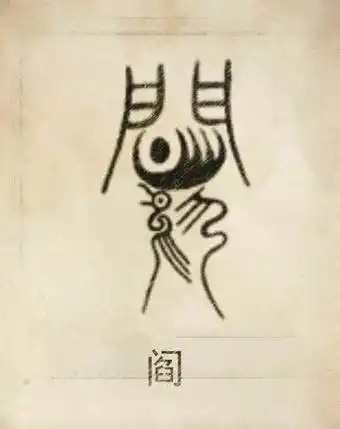The Yan(yán) surname is more than just a family name—it’s a living tapestry of China’s history. With roots stretching back to the Zhou Dynasty (1046–256 BCE) and branches extending across multiple ethnic groups, the Yan clan embodies the "unity in diversity" that defines Chinese civilization. For readers curious about Chinese heritage, this story offers insights into how family names became bridges between cultures.

Ⅰ、Surname Origins
1. Aristocratic Beginnings
Zhou Dynasty Nobility:
The Yan surname first emerged among Zhou royalty. When King Wu overthrew the Shang Dynasty (c. 1046 BCE), he honored his ancestor Taibo by granting his descendant Zhongyi the fiefdom of Yanxiang (modern Shanxi). His descendants took the feudal name as their family name and became the orthodox Yans.
Son of King Kang of Zhou:
A prince of King Kang (Zhou Dynasty) was given the Yan territory (Shaanxi) due to a unique palm birthmark resembling the character "阎(yán) ",form another branch of Yan surname
Warring States Era:
During the Spring and Autumn Period (771–476 BCE), descendants of the Jin and Chu states adopted "Yan" from their feudal lands in Hubei and Shanxi.
2. The evolution of the feudal fiefdom of the Chu royal family during the Spring and Autumn Period, Xiong Bo Yu, a member the Chu royal family, was enfeoffed in Yan (present-day Ma Cheng, Hubei), and his descendants took the feudal as their surname, forming the Jingchu Yan family.
3. Ethnic Fusion
Xiongnu & Xianbei: Han Dynasty (206 BCE–220 CE) records show匈奴 (Xiongnu) nobles adopting "Yan" during cultural exchanges.
Manchu & Mongol Influences: In the Qing Dynasty (1636–1912), clans like the Manchu Bujamuci and Mongolian Yuenuote simplified their names to "Yan."
Southwestern Tribes: Ethnic groups like the Daur contributed through names like Aola and Suoduoli.
Ⅱ、Legendary Figures
1. Politics & Leadership
Yan Xian: Brother of Emperor An’s empress, his rise and fall during the Eastern Han Dynasty (25–220 CE) mirrors the era’s volatile court politics.
Yan Wen: A loyal official executed by warlord Ma Chao in 212 CE, celebrated in the Records of the Three Kingdoms.
2. Art & Academia
Yan Liben : Tang Dynasty (618–907 CE) master painter and chancellor. His Portraits of the Emperors revolutionized Chinese art. Fun fact: His brother Yan Lide designed imperial palaces!
Yan Ruoqu: Qing scholar who exposed the Old Text Book of Documents as a forgery, reshaping classical studies.
3. Cultural Icons
Yan Weiwen: A PLA singer, his song Little Poplar symbolizes China’s military spirit.
Ⅲ、Cultural Legacy
1. Family Values
Yan clans uphold mottos like "Loyalty, Filial Piety, and Integrity", inspired by Confucianism. Ancestral halls like Danqing Hall honor Yan Liben’s artistic genius.
2. The Meaning of "Yan"
The character combines "gate" (门) and "trap" (臽), symbolizing both protection and strategic depth—a nod to the clan’s historical roles as guardians and thinkers.
Ⅳ、Modern Connections
1. Distribution and migration of the population
Ancient times: Originating in Shanxi and Shaanxi, it expanded to Hen and Sichuan during the late Han Dynasty, and formed two major clans, Taiyuan and Tianshui, during the Tang and Song Dynast.
Modern times: The current population is about 4.55 million, with Henan, Shandong, and Hebei as the centers population concentration.
2. Witness of multi-ethnic integration
The evolution of the Yen surname can be regarded as a living specimen of the integration the Chinese nation—the integration of ethnic groups such as the Xiongnu, Xianbei, Mongolian, and Manchu has made it a symbol the "cultural community."
3. Continuation of modern academia and culture
Yen Chongnian (Contemporary): A specialist in Qing, he reinterpreted Chinese civilization with works such as "The Grand Imperial Palace" and "The Forest Empire," and his philosophy of "Four Harmonies"Heaven, Earth, People, and Self) has a profound impact.
Overseas Chinese: During the Ming and Qing dynasties,en surname immigrants from Fujian and Guangdong provinces migrated to Southeast Asia, and the Yen surname communities in Singapore, Malaysia, and other places have bridges for the overseas transmission of Chinese culture.
Conclusion
The surname Yan carries a profound history from the rites and music of the Zhou Dynasty to the integration of ethnic groups, cultural genes that include both the aristocratic imprint of "taking the county as the surname" and the spirit of the common people of "loyalty, bra, and righteousness". Whether it is Yan Liben's exquisite brushwork, Yan Ruoqu's textual research and pursuit of truth, or Yan Chongnian's historical innovation, this surname has always maintained an open and inclusive attitude, writing the resonance of the family and the times in the long river of Chinese. The inheritance of the surname Yan is not only the continuation of the bloodline, but also the witness of the endless Chinese culture.